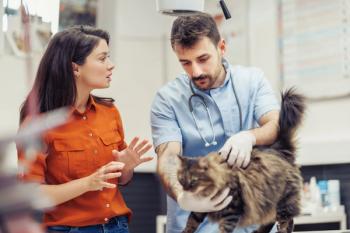
Creating an outpatient experience that creates more comprehensive visits (Proceedings)
Once the receptionist has greeted the client and pulled the medical record, she should then review the record to make sure that the patient is current on all preventative procedures and indicate on the patient visit slip, as well as the medical record, why the animal has been presented.
I. Implement an effective exam room technician protocol
II. Include educational pieces and tools
III. Add value to a routine appointment (as well as the non-routine appointments)
Exam Room Technician Protocol
1. Once the receptionist has greeted the client and pulled the medical record, she should then review the record to make sure that the patient is current on all preventative procedures and indicate on the patient visit slip, as well as the medical record, why the animal has been presented.
2. The exam room technician should then be summoned and receive the medical record, at which time he or she will greet the client in the waiting room, obtain the animal's weight on the digital scale, and escort the client and patient into the exam room.
3. The exam room technician should acquire any additional background medical information necessary on the patient. If it is a medical case, the exam room technician should obtain a temperature on the animal.
4. The exam room technician should attempt to market the services of the practice, as well as inform the client about any preventative procedures necessary to their pet's health. It is also during this time that the exam room technician can answer any questions the client may have that they feel comfortable in answering.
5. The exam room technician may also wish to augment the informational process by the use of the "Exam Room Report Card."
6. At this point, the exam room technician should get any medications or vaccines that will be necessary for the office visit.
7. The doctor should then be summoned to enter the room and initiate the necessary procedures.
8. The exam room technician should remain in the room during the office visit and assist the doctor in whatever manner possible.
9. The exam room technician should, towards the end of the office visit, count out and label any prescriptions that will be necessary or obtain any discharge drugs or supplies that have been requested.
10. The exam room technician should then escort the client to the waiting room, clean the examination room, and begin the process all over again.
11. It is hopeful that once the exam room technician is more fully trained, this individual will also be able to conduct routine laboratory tests, so that he or she will be able to do fecal analysis and heartworm checks. This should be done towards the middle of the office visit once the technician has assisted the doctor with the procedures necessary.
Newsletter
From exam room tips to practice management insights, get trusted veterinary news delivered straight to your inbox—subscribe to dvm360.




